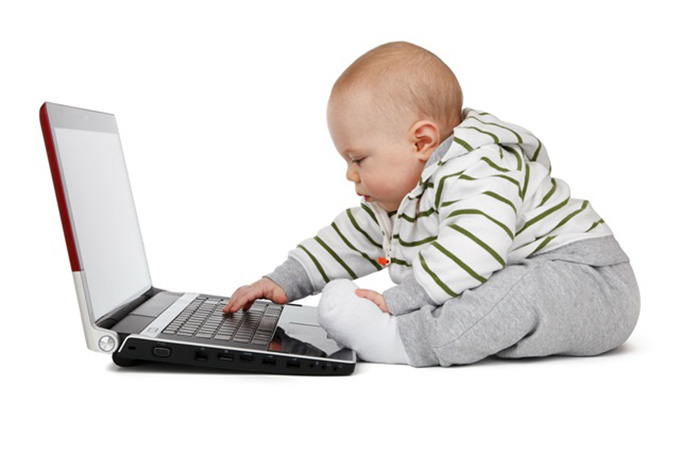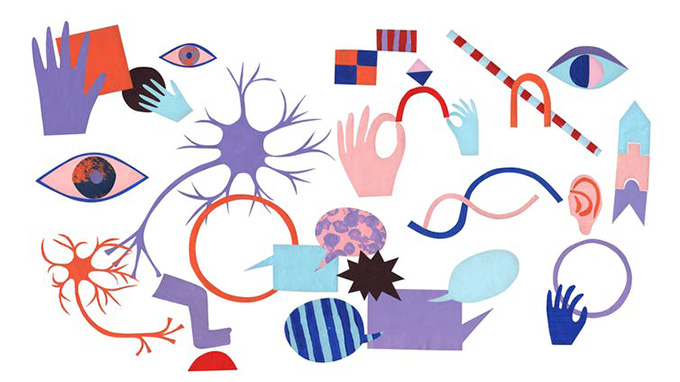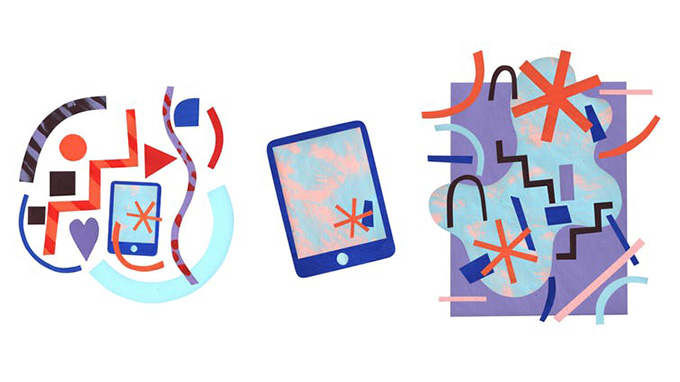
The exposure of children under the age of 6 to digital tools, and in particular to screens, worries as much as it questions. Families and professionals and professionals in health and education find themselves confronted with the same problems. Difficulties that were exacerbated in the midst of the Covid-19 crisis: what advice should be given to those who take care of toddlers? How to reconcile everyday issues (for example, having the children at home during a telework day) with the challenges of child development?
Faced with these challenges, injunctions, sometimes guilty or contradictory, are increasing among the general public. Research can then help us to see more clearly. It has in fact the methods and tools to analyze this public health problem with objectivity and rigor.
This research approach is precisely adopted in the MOOC (or online course) “Digital culture: the development of the toddler in the digital age”, carried out by the research collective Premiers Cris (CRI, University of Paris) . This MOOC makes it possible to compare the points of view of different stakeholders: actors and actresses from research, the field, entrepreneurship or the institutional world, as well as families.
Through these crossed perspectives, this MOOC explores many questions at the heart of current debates: what is the impact of the use of digital tools on the development of the child? When we talk about screens, what do we really mean? Are there digital devices suitable for toddlers? Or, what digital do we want for generations to come?
Currently researching
It is important to keep in mind that the arrival of digital tools (especially mobile) in our lives and those of toddlers is still very recent. Also, research on this subject is still in its infancy! It should also be remembered that the majority of the work published to date concerns television and not interactive and mobile screens, such as smartphones or tablets.
Another point of alert: while this work explores the relationship between exposure to screens and children’s development, they do not allow us to conclude on the causal link between these two factors.
What do these studies tell us? Rana Esseily and Bahia Guellai, both senior lecturers at the University of Paris Nanterre, contributed to a review of the literature on the subject, published in 2017 in the journal Spirale. One of the main conclusions of this scientific article is that television exposure does not appear to be of interest to children under the age of 3 and may even have deleterious effects on their cognitive development. It is therefore not recommended for the little ones.
After 3 years, screens can be a learning aid, provided they are used wisely. It is therefore better to favor an interactive use of the screens (in which the child comes to interact by pronouncing a recorded word or making a gesture to go to the next step in a story, for example) and accompanied by an adult, as well as content adapted to the child’s age.
In conclusion, this article reminds us that it is not the screen itself that is bad but its use that can be poorly adapted. Screen time, especially unaccompanied, reduces the space given to other activities essential to the development of the child: moving, discovering nature, interacting with other children, exploring and manipulating objects in their environment, for example example.

“The parent-child relationship, play, language & sensorimotor development”. Illustrations by Cécile Barraud de Lagerie. Cécile Barraud de Lagerie
It therefore seems essential to question the influence that these digital tools could have on the development of the child. Let’s explore four aspects here.
The adult-child relationship
The young child’s relationship to his environment goes through the relationship with others: his parents, grandparents and all those around him. Thus, by questioning the relationship of young children to the digital world, we also question the relationship of the adult who takes care of the toddler to the digital world: do I use my smartphone while I bottle-feed my child? Do I watch TV while playing with my child?
If the answer to these questions is systematically positive, we then speak of “parental technoference”, that is to say that the digital tool used by the adult forms a barrier to the relationship with the child, explains Marie- Noëlle Clément, director of the André Boulloche Children’s Day Hospital and author of a recent review of the literature on nomadic screens. This relationship is however essential to the overall development of toddlers. It is therefore important to favor times without a screen, not only for children, but also within the family in order to promote moments of exchange and sharing.
The game
One of the privileged means of interaction of the child with his environment is play. To play means to manipulate, explore, discover and understand the world. It is therefore important that the playground offered to the child is rich and varied and not reduced to a single type of object, a single type of support. The tablet, even when it offers a variety of activities, should not be the child’s only play medium, but can be integrated among many other possibilities.
The director of LaPsyDÉ (Laboratory of developmental psychology and child education), Grégoire Borst, MOOC worker, reminds us of the importance of play and motivation to stimulate learning, from a very young age.
In his research, Grégoire Borst highlights the importance of executive functions, hosted by our prefrontal cortex, allowing us to resist automatisms or manipulate information. Executive functions can be stimulated by playful approaches, sometimes permitted by video games, when these are used for educational purposes, with support and in children over 3 years of age.
Language
Another MOOC speaker, Franck Ramus , research director at the CNRS and specialist in cognitive neuroscience, teaches us that the child needs to be immersed in a language bath to learn to speak. The words heard on television are not enough for toddlers, they need social interactions in all their richness: communication through words, gestures and gaze.
Once again, it is appropriate here to question the use that children have of screens but also that of their relatives in their presence. There is a real difference between putting your child in front of a cartoon while you are writing messages on his phone, and accompanying him in the discovery of this cartoon by commenting throughout the content watched together.
Sensorimotor development
Finally, the sensori-motor development of the child also seems to be able to be influenced by the use of digital tools. Are the motor skills of children, surprisingly skilled with their hands in front of a tablet, endangered?
Asked about this, the psychomotor therapist Aurélien d’Ignazio insisted on the importance of creating hybrid environments, that is to say that combine both screen activities and screenless activities. Some tablet exercises (for drawing letters, or moving objects on the screen) can encourage the development of fine motor skills, or interactive objects can awaken different senses simultaneously: touch, visual and auditory.
Context-Container-Content
Screens are tools that are part of toddler’s environment, and should be seen as such, no more and no less. It is therefore a question of not demonizing them but of being careful to use them wisely so that they remain supports for activities among others.

“Content-Container-Context”. Illustrations by Cécile Barraud de Lagerie. Cécile Barraud de Lagerie
The principle of 3Cs: Context – Container – Content, i.e. the context of use of screens (environment), then considered as containers (tools) of content (uses), can enlighten us by questioning our uses and the digital uses of all -small.
It is essential that we are all able to develop our critical thinking on the question of the relationship of young children to digital tools, by learning to identify relevant scientific information. Thus, together we will be able to draw the educational and pedagogical practices adapted to each context, and in accordance with current knowledge on child development.
Author Bios: Marion Voillot is a PhD student and Lisa Jacquey is a Doctor in Cognitive Sciences both at the Interdisciplinary Research Center (CRI)